LITE ON TECHNOLOGY WN4622R 802.11b/g/n 1T1R Wireless Lan USB Module User Manual
LITE-ON Technology Corp. 802.11b/g/n 1T1R Wireless Lan USB Module
user manual

Ben J. Chen Page 1 12/6/2012
8
80
02
2.
.1
11
1n
n
2
2.
.4
4G
G
1
1T
T1
1R
R
W
Wi
ir
re
el
le
es
ss
s
L
LA
AN
N
U
US
SB
B
M
Mo
od
du
ul
le
e
W
WN
N4
46
62
22
2R
R
User’s Manual

Ben J. Chen Page 2 12/6/2012
REGULATORY STATEMENTS
FCC Certification
The United States Federal Communication Commission (FCC) and the Canadian
Department of Communications have established certain rules governing the use of
electronic equipment.
Part15, Class B
This device complies with Part 15 of FCC rules. Operation is subject to the
following two conditions:
1) This device may not cause harmful interference, and
2) This device must accept any interference received, including interference
that may cause undesired operation. This equipment has been tested and found to
comply with the limits for a Class B digital device, pursuant to Part15 of the FCC
Rules. These limits are designed to provide reasonable protection against harmful
interference in a residential installation. This equipment generates, uses and can radiate
radio frequency energy, and if not installed and used in accordance with the instructions,
may cause harmful interference to radio communications. However, there is no guarantee
that interference will not occur in a particular installation. If this equipment does cause
harmful interference to radio or television reception, which can be determined by turning
off and on, the user is encouraged to try to correct the interference by one or more of the
following measures:
• Reorient or relocate the receiving antenna.
• Increase the separation between the equipment and receiver.
• Connect the equipment into an outlet on a circuit different from that to which the
receiver is connected.
• Consult the dealer or an experienced radio/TV technician for help.
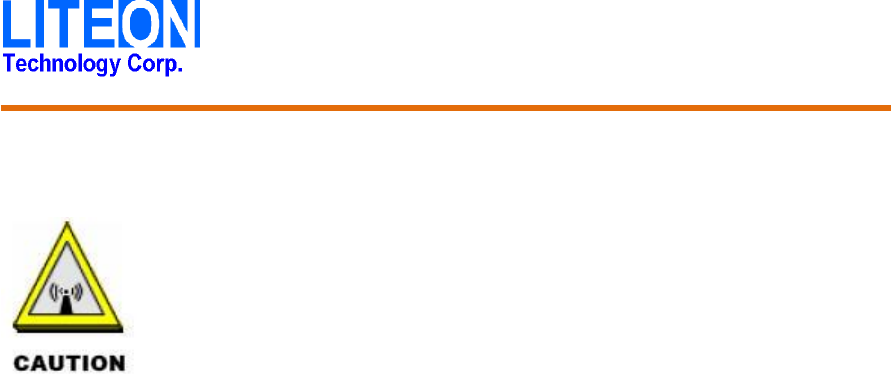
Ben J. Chen Page 3 12/6/2012
Warning: Changes or modifications to this unit not expressly approved by
the party responsible for compliance could void the user authority to operate
the equipment.
1. This Transmitter must not be co-located or operating in conjunction with
any other antenna or transmitter.
2. For product available in the USA market, only channel 1~11 can be
operated. Selection of other channels is not possible.
IMPORTANT NOTE:
This module is intended for OEM integrator. The OEM integrator is still responsible
for the FCC compliance requirement of the end product, which integrates this module.
20cm minimum distance has to be able to be maintained between the antenna and the
users for the host this module is integrated into. Under such configuration, the FCC
radiation exposure limits set forth for an population/uncontrolled environment can be
satisfied.
Any changes or modifications not expressly approved by the manufacturer
could void the user's authority to operate this equipment.
USERS MANUAL OF THE END PRODUCT:
In the users manual of the end product, the end user has to be informed to keep at least
20cm separation with the antenna while this end product is installed and operated. The
end user has to be informed that the FCC radio-frequency exposure guidelines for an
uncontrolled environment can be satisfied. The end user has to also be informed that any
changes or modifications not expressly approved by the manufacturer could void the
user's authority to operate this equipment. If the size of the end product is smaller than
8x10cm, then additional FCC part 15.19 statement is required to be available in the user
manual: This device complies with Part 15 of FCC rules. Operation is subject to the
following two conditions: (1) this device may not cause harmful interference and (2) this
device must accept any interference received, including interference that may cause
undesired operation.

Ben J. Chen Page 4 12/6/2012
Le present appareil est conforme aux CNR d'Industrie Canada applicables
aux appareils radio exempts de licence. L'exploitation est
autorisee aux deux conditions suivantes:
1. l'appareil ne doit pas produire de brouillage, et
2. l'utilisateur de l'appareil doit accepter tout brouillage radioelectrique
subi, meme si le brouillage est susceptible d'en compromettre le fonctionnement.
This Class B digital apparatus complies with Canadian ICES-003.
Cet appareil numerique de la classe B est conforme a la norme NMB-003 du Canada.
This Category II radio communication device complies with Industry Canada Standard
RSS-210.
Ce dispositif de radiocommunication de categorie II respecte la norme CNR-210
d'Industrie Canada.
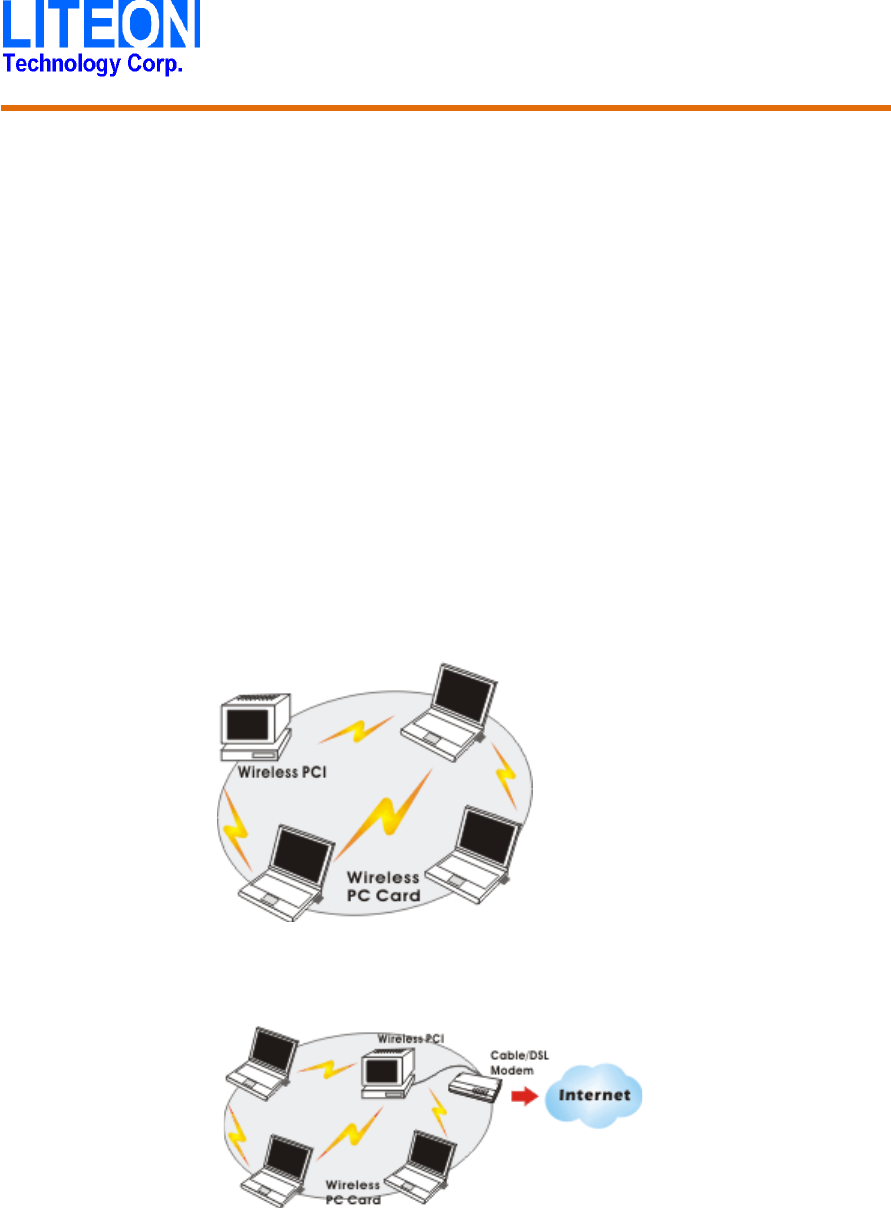
Ben J. Chen Page 5 12/6/2012
INTRODUCTION
The 802.11b/g/n 1T1R USB WLAN Module is a device that allows you connect your
computer to a wireless local area network (LAN). A wireless LAN allows your system to
use wireless Radio Frequency (RF) technology to transmit and receive data without
physically attaching to the network. The Wireless protocols that come with this product
ensure data security and isolation from interference generated by other radio frequencies.
This card also allows you to take full advantage of your computer’s mobility with
access to real-time information and online services anytime and anywhere. In addition,
this device eliminates the bother of pulling cable through walls and under furniture. It
even allows you to place your system in locations where cabling is impossible.
Modifying and augmenting networks has never been so easy.
Wireless Network Options
The Peer-to-Peer Network
This network installation lets you set a small wireless workgroup easily and
quickly. Equipped with wireless PC Cards or wireless PCI, you can share files
and printers between each PC and laptop.
You can also use one computer as an Internet Server to connect to a wired global
network and share files and information with other computers via a wireless LAN.
The Access Point Network
The network installation allows you to share files, printers, and Internet access
much more conveniently. With Wireless LAN Cards, you can connect wireless
LAN to a wired global network via an Access Point.
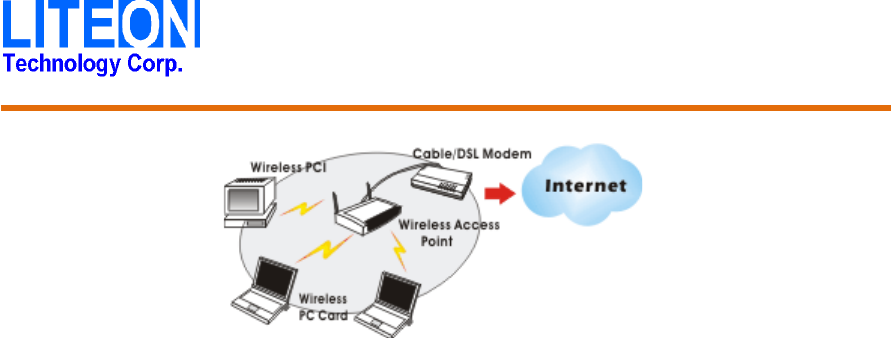
Ben J. Chen Page 6 12/6/2012
SOFTWARE INSTALLATION
Install the device
1. Make sure the computer is turned off. Remove the expansion slot cover from the
computer.
2. Carefully slide the 802.11b/g/n 1T1R USB WLAN Module into the USB slot. Push
evenly and slowly and ensure it is properly seated.
3. After the device has been connected to your computer, turn on your computer.
Windows will detect the new hardware and then automatically copy all of the files
needed for networking.
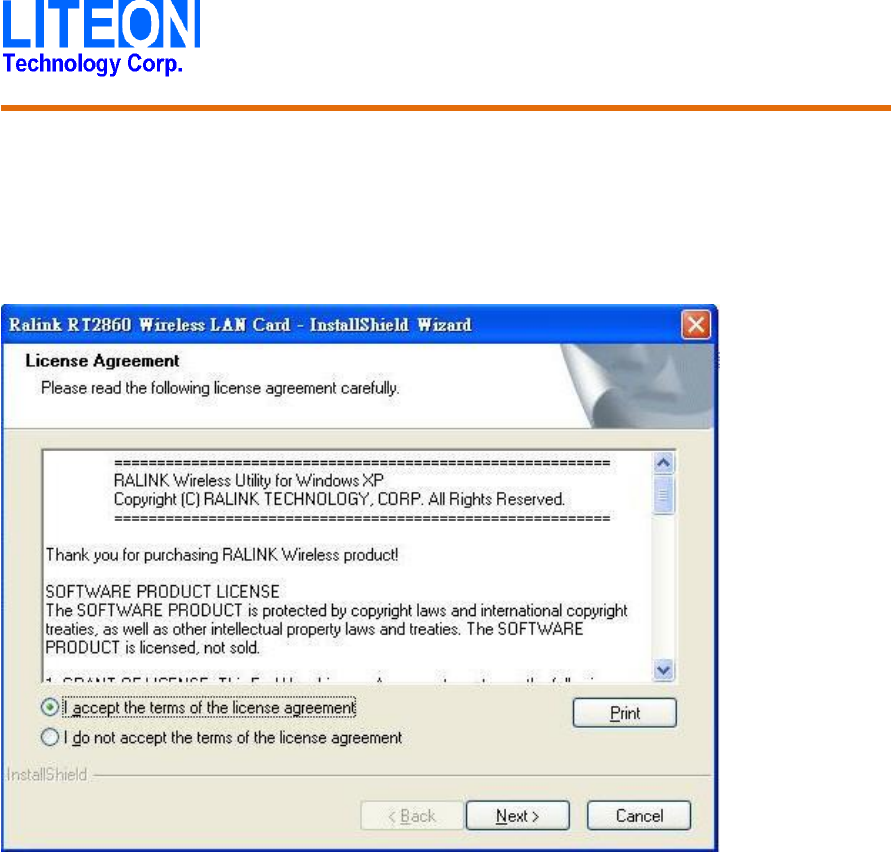
Ben J. Chen Page 7 12/6/2012
Install the Driver & Utility
1. Exit all Windows programs. Insert the included CD-ROM into your computer. The
CD-ROM will run automatically.
2. When the License Agreement screen appears, please read the contents and select
“I accept the terms of the license agreement” then click Next to continue.
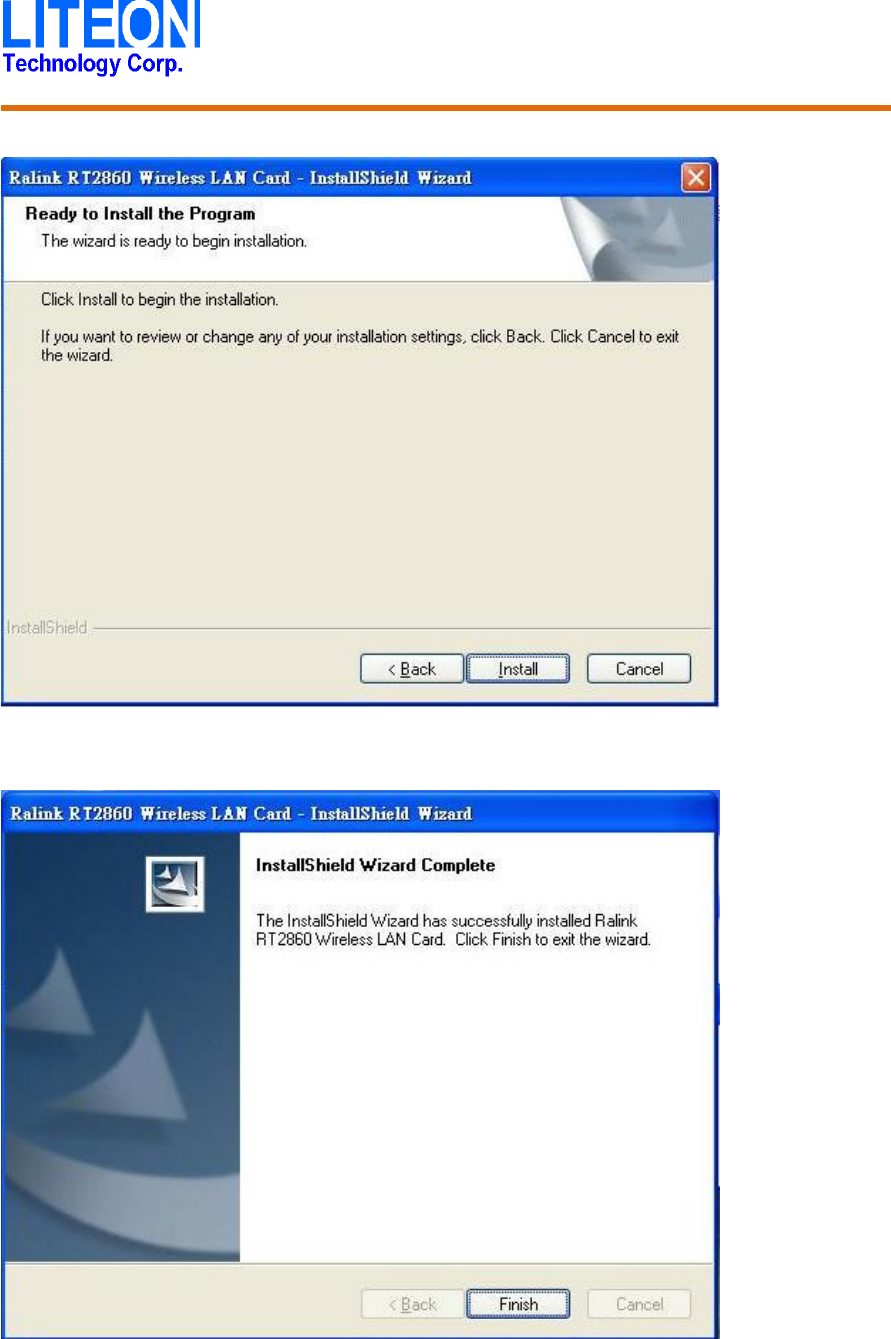
Ben J. Chen Page 8 12/6/2012
3. Click the Install to continue
4. When the following screen appears, click Finish to complete the software
installation.
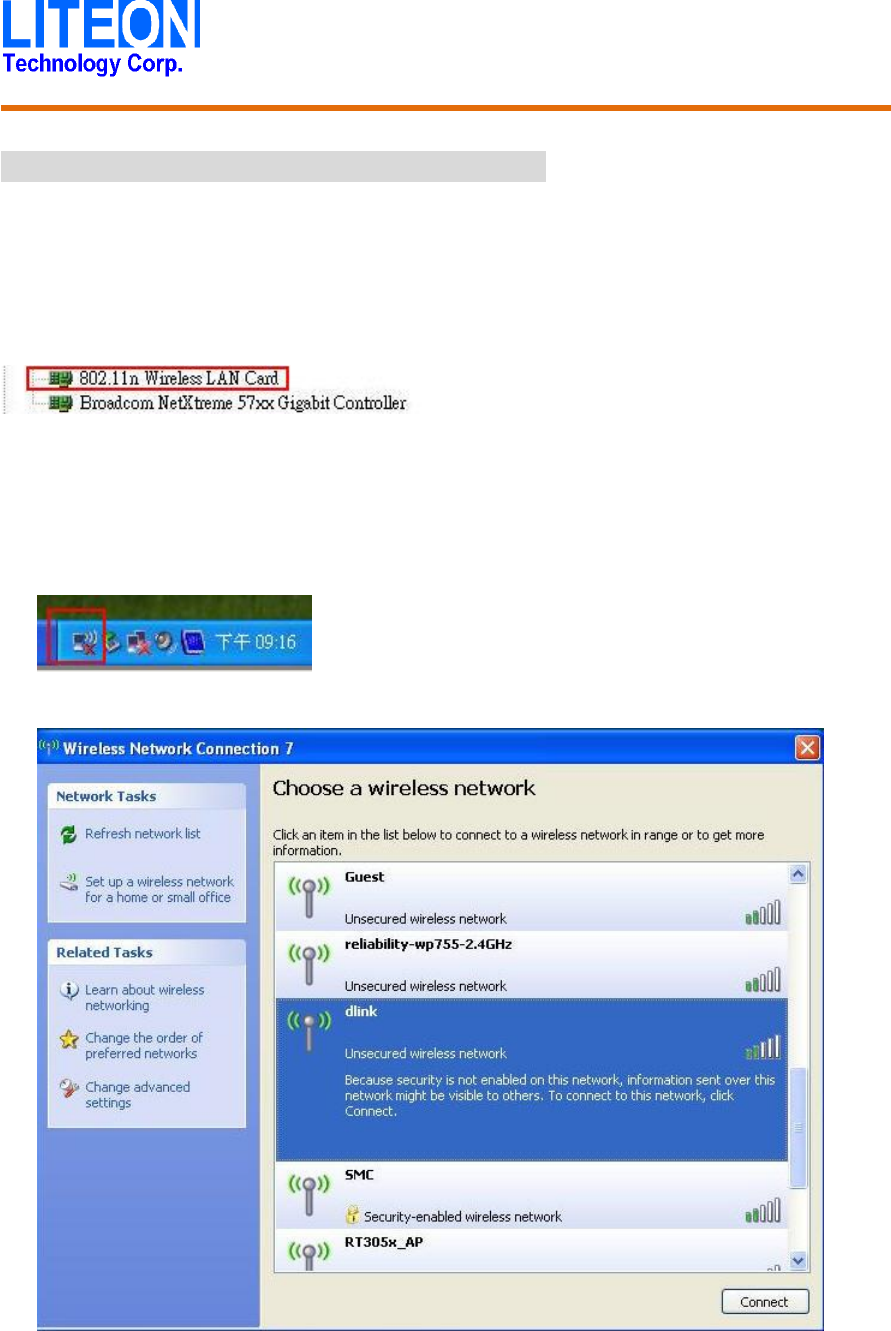
Ben J. Chen Page 9 12/6/2012
HARDWARE INSTALLATION
Verification
To verify if the device exists in your computer and is enabled, go to Start >
Control Panel > System (> Hardware) > Device Manager. Expand the
Network Adapters category. If the 802.11n Wireless LAN Card
is listed here, it means that your device is properly installed and enabled.
NETWORK CONNECTION
Once the device driver is well installed, a network setting described in the following
should be also established.
1. Click the Wireless icon to enable Windows Zero Configure.
2. Select the AP then click the Connect
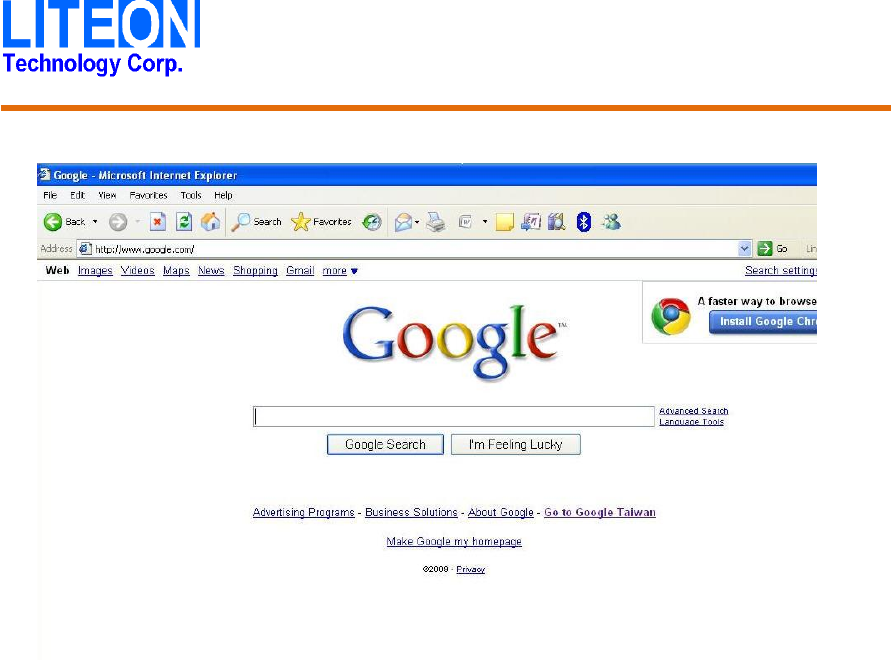
Ben J. Chen Page 10 12/6/2012
3. Surfing the Internet after completing connection.
Operating Voltage
Range: DC 3.0 ~3.6

Notice
This device complies with Part 15 of the FCC Rules. Operation is subject to the
following two conditions: (1) this device may not cause harmful interference and (2)
this device must accept any interference received, including interference that may
cause undesired operation.
For P15B equipment
This equipment has been tested and found to comply with the limits for a Class B
digital device, pursuant to part 15 of the FCC rules. These limits are designed to
provide reasonable protection against harmful interference in a residential installation.
This equipment generates, uses and can radiate radio frequency energy and, if not
installed and used in accordance with the instructions, may cause harmful interference
to radio communications. However, there is no guarantee that interference will not
occur in a particular installation. If this equipment does cause harmful interference to
radio or television reception, which can be determined by turning the equipment off
and on, the user is encouraged to try to correct the interference by one or more of the
following measures:
-Reorient or relocate the receiving antenna.
-Increase the separation between the equipment and receiver.
-Connect the equipment into an outlet on a circuit different from that to which the
receiver is connected.
-Consult the dealer or an experienced radio/TV technician for help.
Information To Be Supplied to the End User by the OEM or Integrator
The following regulatory and safety notices must be published in documentation supplied to
the end user of the product or system incorporating an adapter in compliance with local
regulations. Host system must be labeled with "Contains FCCID:PPQ-WN4622R“, FCC ID
displayed on label.

Canada — Low-power license-exempt radio communication devices (RSS-210)
a. Common information Operation is subject to the following two conditions:
1. This device may not cause interference, and
2. This device must accept any interference, including interference that may cause
undesired operation of the device.
b. Operation in 2.4 GHz band To prevent radio interference to the licensed service,
this device is intended to be operated indoors and installation outdoors is subject to
licensing.
Canada - de faible puissance exempts de licence des appareils de communication
radio (CNR-210)
a. Informations communes
Son fonctionnement est soumis aux deux conditions suivantes:
1. Ce dispositif ne peut causer des interférences, et
2. Ce dispositif doit accepter toute interférence, y compris les interférences qui
peuvent causer un mauvais fonctionnement du dispositif.
b. Le fonctionnement en bande de 2,4 GHz Pour prévenir les interférences
radioélectriques aux services sous licence, cet appareil est destiné à être exploité à
l'intérieur et à l'extérieur d'installation est soumise à licence.
Information To Be Supplied to the End User by the OEM or Integrator
Modular information form OEM
Information to Be Supplied to the End User by the OEM or Integrator
The following regulatory and safety notices must be published in documentation supplied to
the end user of the product or system incorporating an adapter in compliance with local
regulations.
Host system must be labeled with "Contains IC: 4491A-WN4622R “